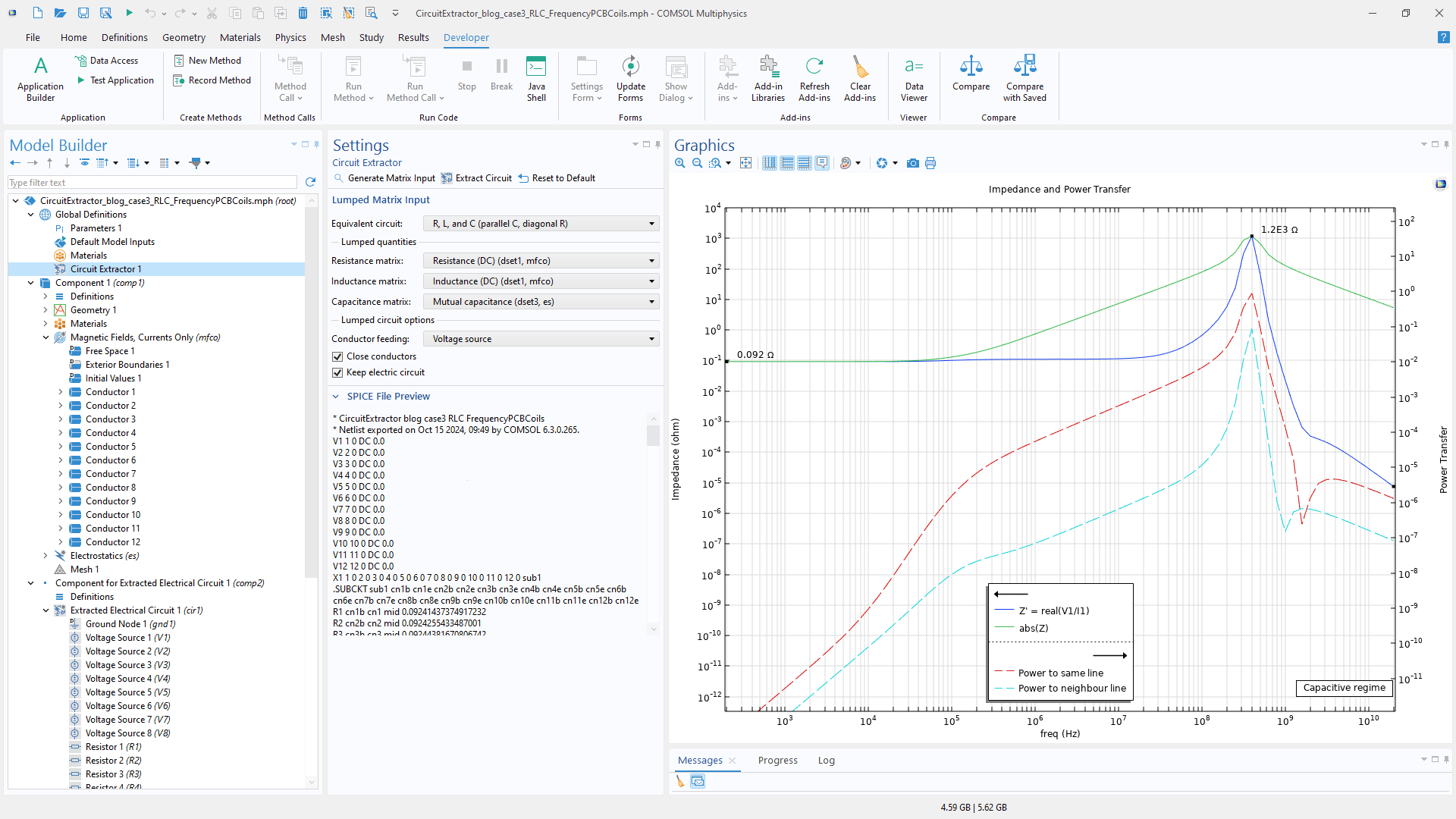Aggiornamenti AC/DC Module
Nuova formulazione per l'interfaccia elettrostatica
L'interfaccia Electrostatics include ora una nuova formulazione di equazioni per un calcolo più accurato della forza elettrostatica, particolarmente utile nella modellazione di dispositivi MEMS come accelerometri e giroscopi. Risolvendo direttamente il campo di spostamento elettrico, questo approccio migliora l'accuratezza nelle geometrie con angoli acuti, consentendo valutazioni più precise della forza, anche per le mesh più grossolane. A differenza della formulazione tradizionale basata sul potenziale, il nuovo metodo utilizza una formulazione mista, risolvendo due equazioni: una per il campo di spostamento elettrico (D) e l'altra per il potenziale elettrico (V). Nella versione 6.3, questa formulazione perfezionata è disponibile come opzione, denominata Mixed finite element, sia per l'elettrostatica 2D che per quella 3D. L'opzione Mixed finite element è l'opzione di discretizzazione predefinita per le interfacce Electromechanics quando si utilizza il MEMS Module o l'AC/DC Module combinato con lo Structural Mechanics Module. Questa nuova formulazione è visibile nel tutorial Micromachined Gyroscope with Mixed Formulation.
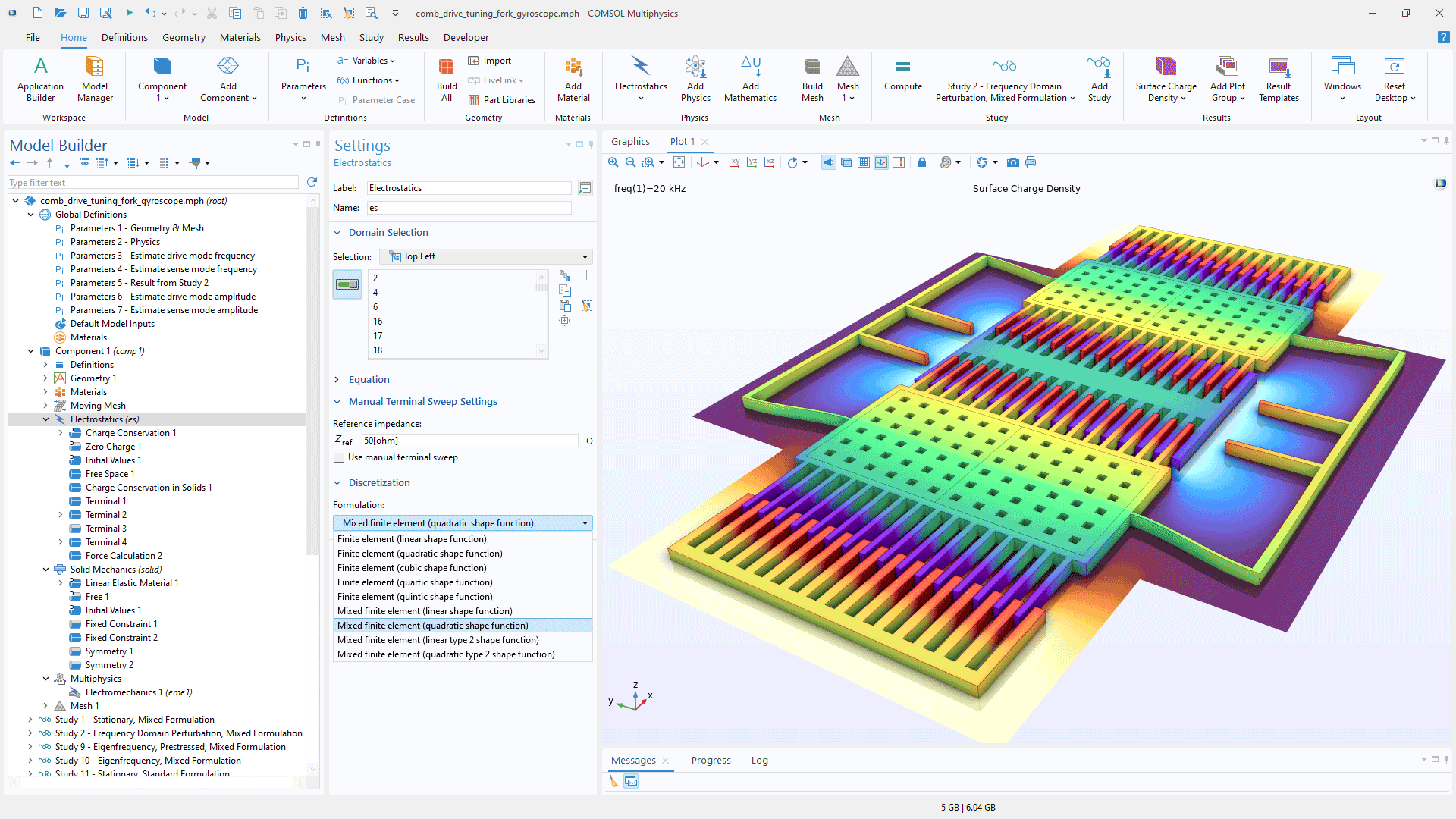
Ampio supporto per la modellazione della dispersione, compresi i tessuti biologici
Sia per l'interfaccia Electrostatics che per l'interfaccia Electric Currents sono disponibili tre nuovi modelli di materiali dielettrici dispersivi: Cole-Cole, Havriliak-Negami e User defined. Questi modelli sono disponibili per studi nel dominio della frequenza e per studi transitori. I modelli si basano sulla funzione Partial Fraction Fit introdotta nella versione precedente, il che significa che i materiali dispersivi possono essere adattati direttamente ai dati misurati.
Inoltre, il modello di materiale dispersivo Multipole Debye esistente può essere utilizzato in combinazione con i dati dei materiali contenuti nella nuova cartella Biological Tissues della libreria dei materiali dell'AC/DC Module. Questa cartella contiene i valori della conducibilità elettrica, della permittività relativa e della temperatura di riferimento, insieme ai tempi di rilassamento e ai contributi della permittività relativa di diversi poli di Debye, per 54 tipi di tessuto biologico. Questi dati sui materiali sono particolarmente utili per le applicazioni mediche.
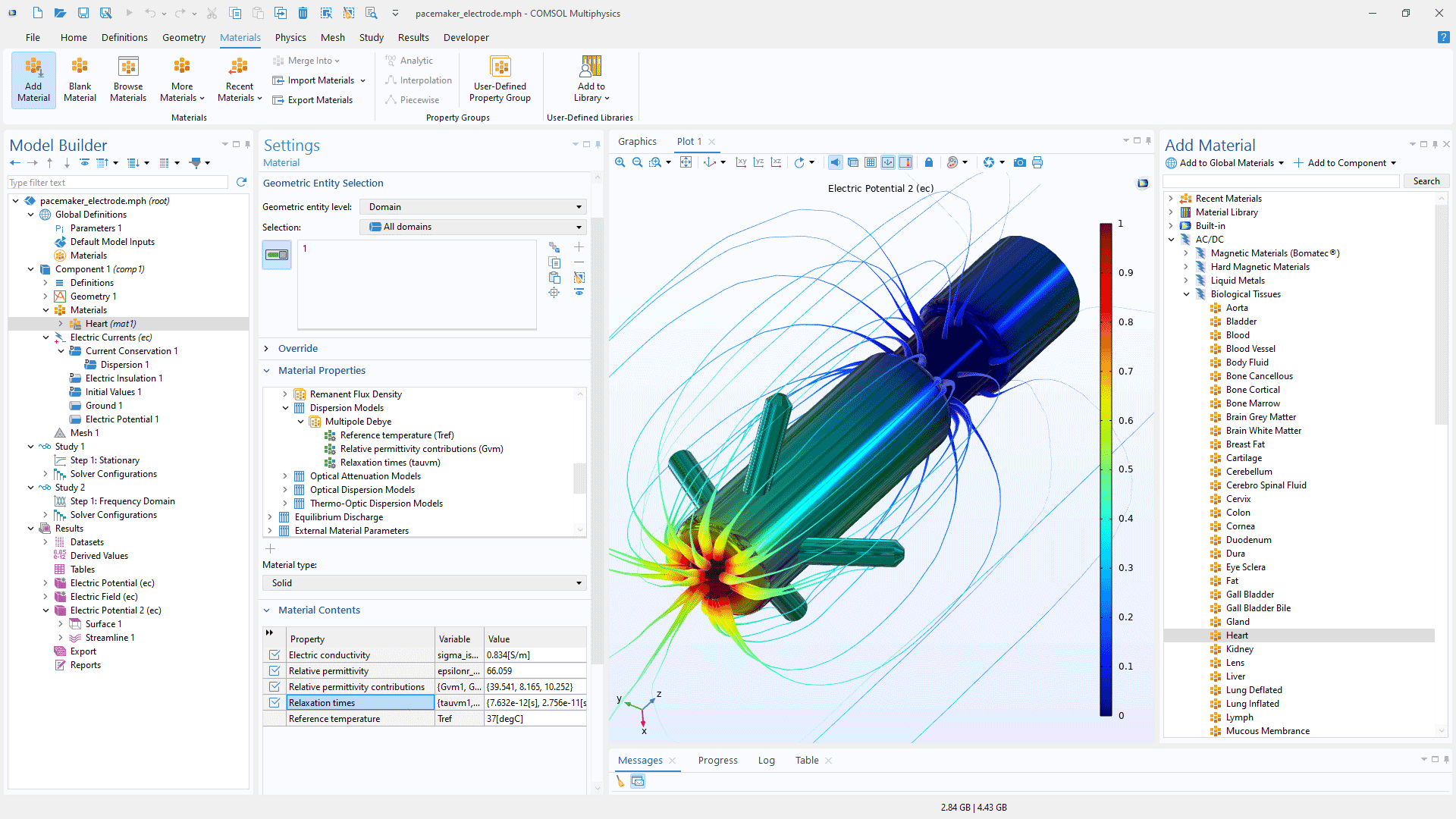
Perdita in alta frequenza e modello di conduttore di bobina Litz omogeneizzato
Il modello di conduttore Homogeneized multiturn nella funzione Coil include ora un modello di perdita efficace in alta frequenza che è abilitato per impostazione predefinita. Nel dominio della frequenza, questo modello assegna una conducibilità effettiva del filo e una permeabilità complessa per modellare la distribuzione del campo e la resistenza AC di una bobina completamente risolta, tenendo conto degli effetti pelle e di prossimità. Inoltre, una nuova opzione Wire properties, From resistance and mutually coupled circuit, collega la bobina a un circuito interno per simulare la perdita induttiva sia nel dominio del tempo che in quello della frequenza.
Il modello di conduttore Homogenized litz coil include il supporto per la perdita effettiva in alta frequenza e consente di specificare il numero di fili e la resistenza DC per unità di lunghezza, compensando la resistenza aggiunta dai profili di torsione. Inoltre, la resistenza del filo litz per unità di lunghezza può essere impostata utilizzando schede tecniche, misure o espressioni dipendenti dalla frequenza.
I seguenti tutorial illustrano queste nuove funzionalità:
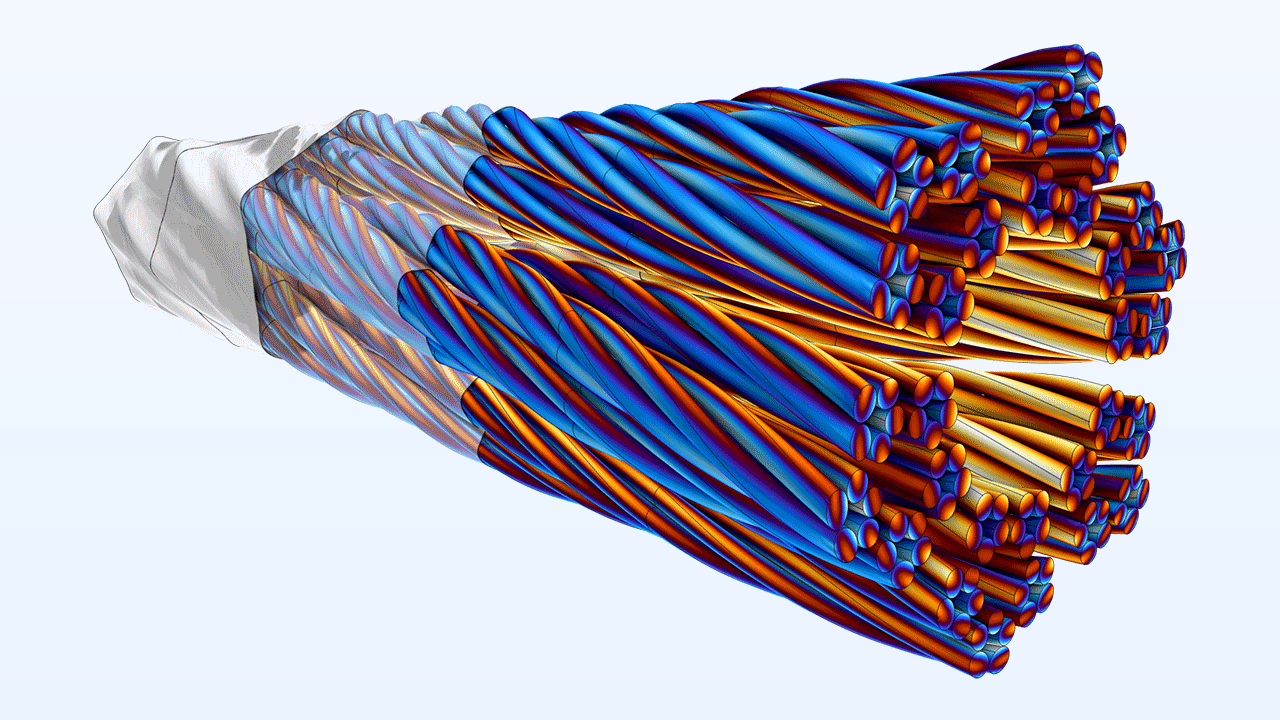
Nuova funzione Nucleo laminato
La nuova funzione Laminated Core consente di modellare in modo efficiente i nuclei laminati di trasformatori, attuatori elettromeccanici e motori elettrici, approssimando le lamine come un mezzo efficace anisotropo. La funzione supporta proprietà magnetiche lineari e non lineari, tra cui Relative permeability, B-H curve e Effective B-H curve. Gli utenti possono impostare la Stacking direction e modificare il Stacking factor per specificare il rapporto tra materiale magnetico e non magnetico. Inoltre, è possibile includere le perdite resistive e magnetiche utilizzando modelli empirici come i modelli Steinmetz o Bertotti. La funzione Laminated Core è disponibile nell'interfaccia Magnetic Fields; nell'interfaccia Magnetic Fields, No Currents e nell'interfaccia Rotating Machinery, Magnetic.
I seguenti tutorial illustrano la funzione Laminated Core:
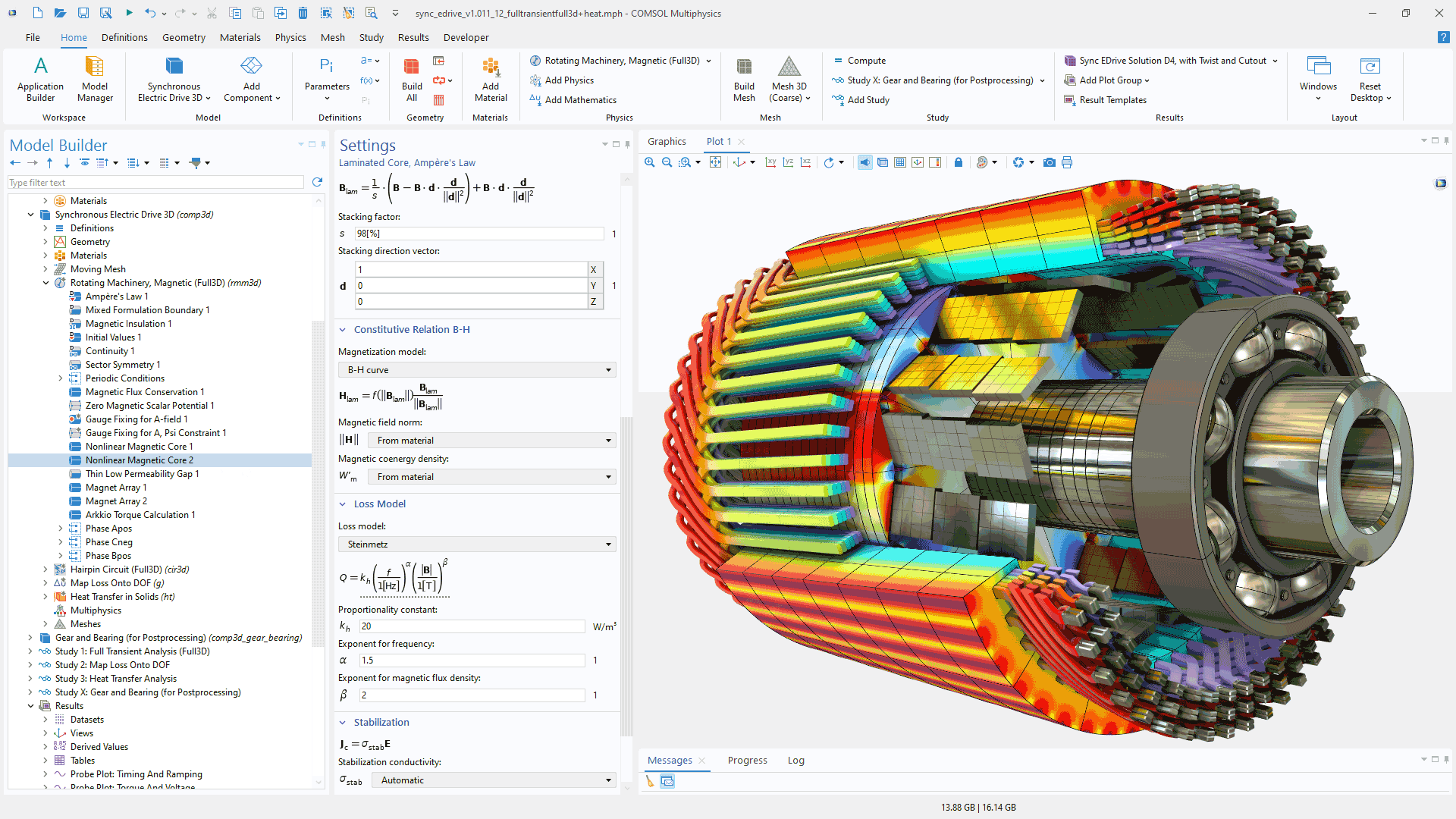
Miglioramento nella fruibilità delle connessioni circuitali
L'uso delle connessioni circuitali è stato notevolmente migliorato, rendendo più semplice il collegamento delle caratteristiche del dominio, ad esempio per collegare l'interfaccia Electric Currents o Magnetic Fields all'interfaccia Electrical Circuit, utilizzando le funzioni Terminal e Coil. La funzionalità automatica gestisce ora il processo di completamento delle connessioni ai circuiti quando una caratteristica di dominio o di contorno è collegata a un circuito elettrico. Inoltre, le funzionalità di importazione ed esportazione dei circuiti sono ora accessibili tramite COMSOL API for use with Java, consentendo alle app, ai metodi del modello o ai componenti aggiuntivi di recuperare o esportare automaticamente i circuiti. Ciò è particolarmente utile per l'estrazione di circuiti a parametri concentrati, in cui i circuiti sono generati sulla base di matrici di resistenza, capacità e induttanza concentrate derivate da modelli a elementi finiti. I seguenti tutorial evidenziano questi nuovi miglioramenti:
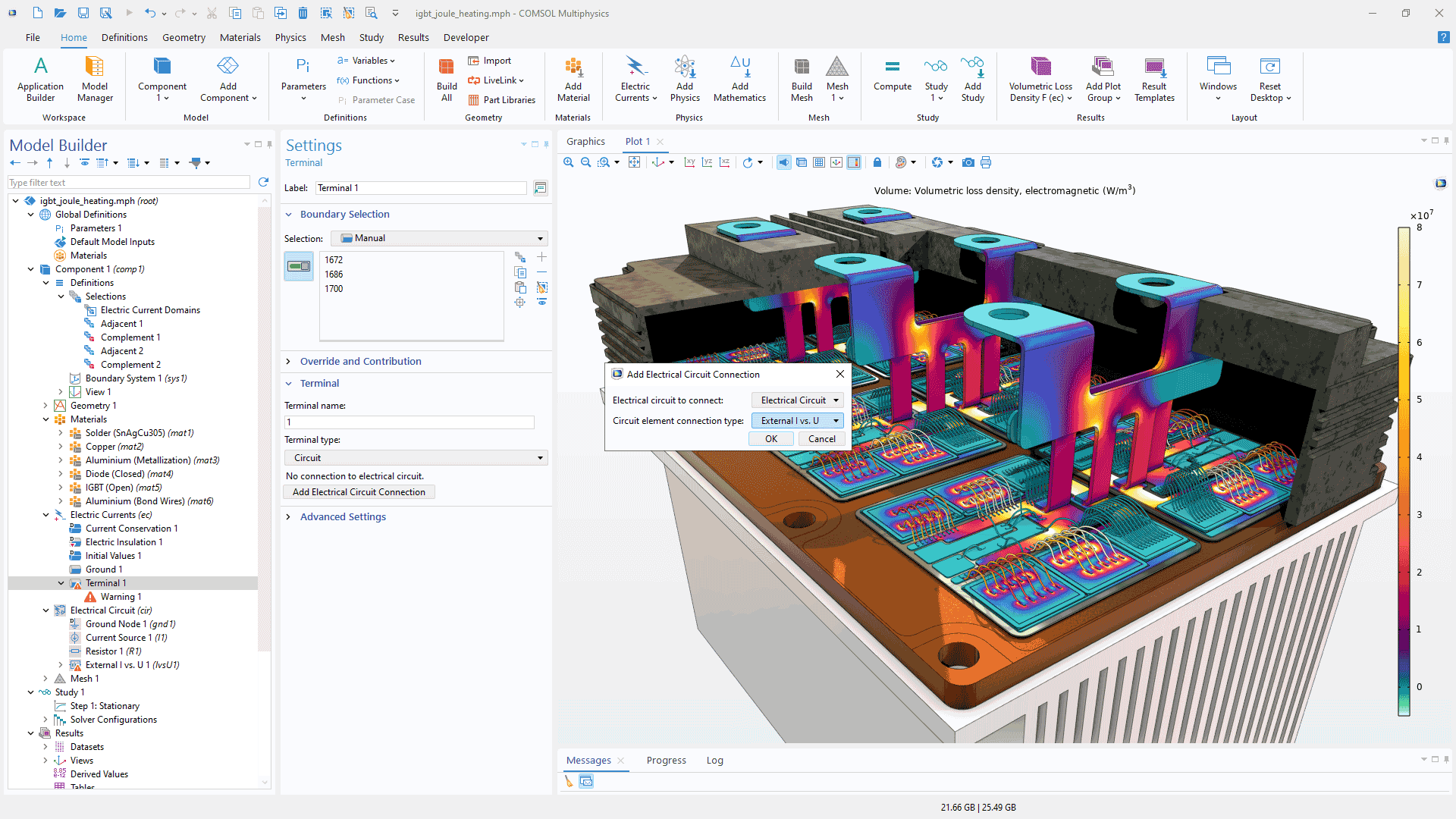
Nuove interfacce multifisiche di elettromeccanica
Le nuove interfacce Electromechanics, Shell ed Electromechanics, Membrane semplificano la modellazione della deformazione di strutture sottili, come le membrane microfoniche, influenzate da forze elettrostatiche. Queste interfacce includono automaticamente l'accoppiamento multifisico Electromechanics, Boundary per una perfetta integrazione con elementi shell o membrana e utilizzano l'interfaccia Electrostatics per modellare il campo elettrico. Dimostrate nei tutorial Brüel & Kjær 4134 Condenser Microphone e Axisymmetric Condenser Microphone, queste interfacce richiedono anche lo Structural Mechanics Module.
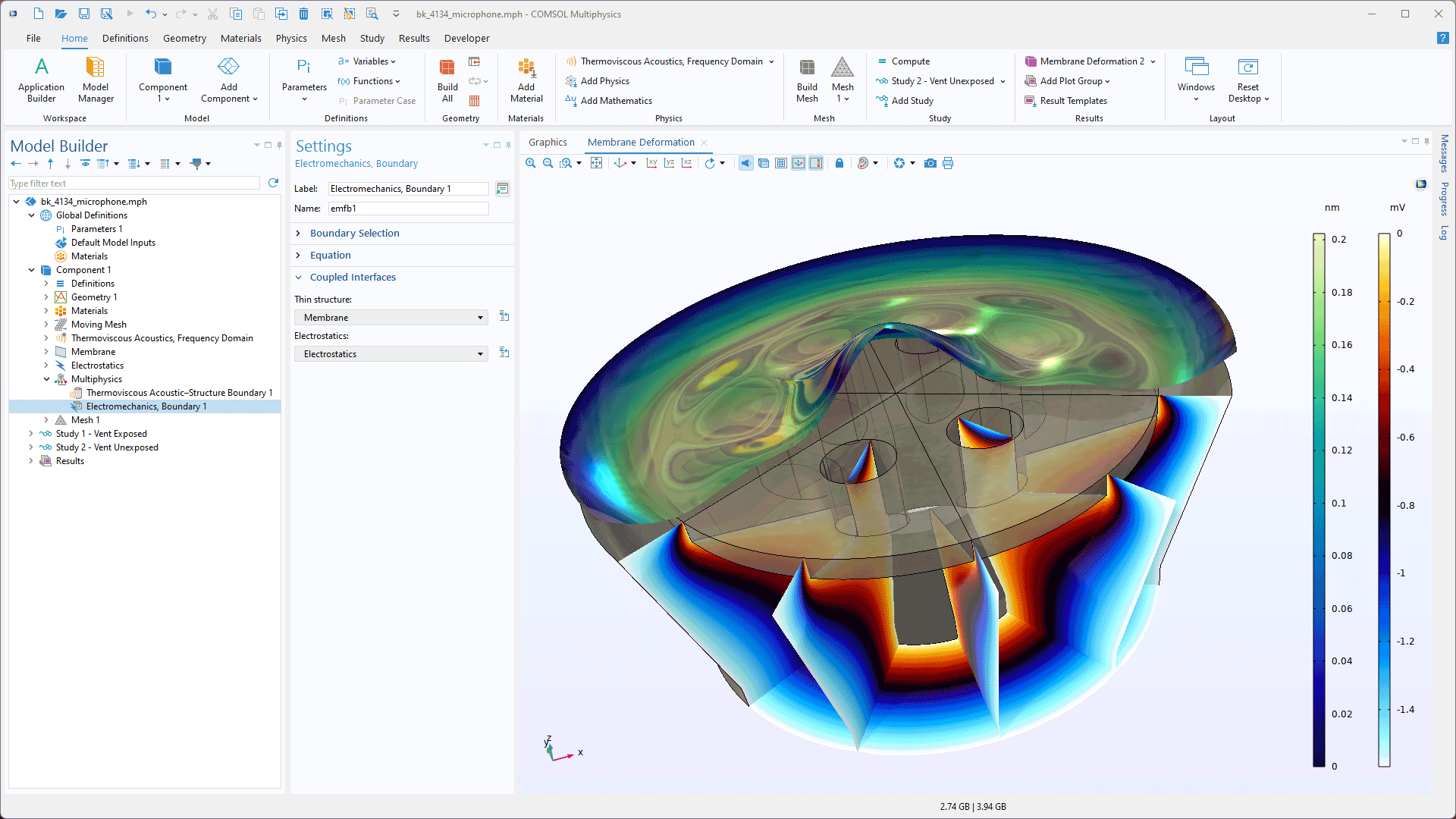
Modelli nuovi e aggiornati, nuova app e nuovo componente aggiuntivo
La versione 6.3 di COMSOL Multiphysics® apporta all'AC/DC Module modelli nuovi e aggiornati, una nuova app e un nuovo componente aggiuntivo.
Permanent Magnet Motor in Steady State
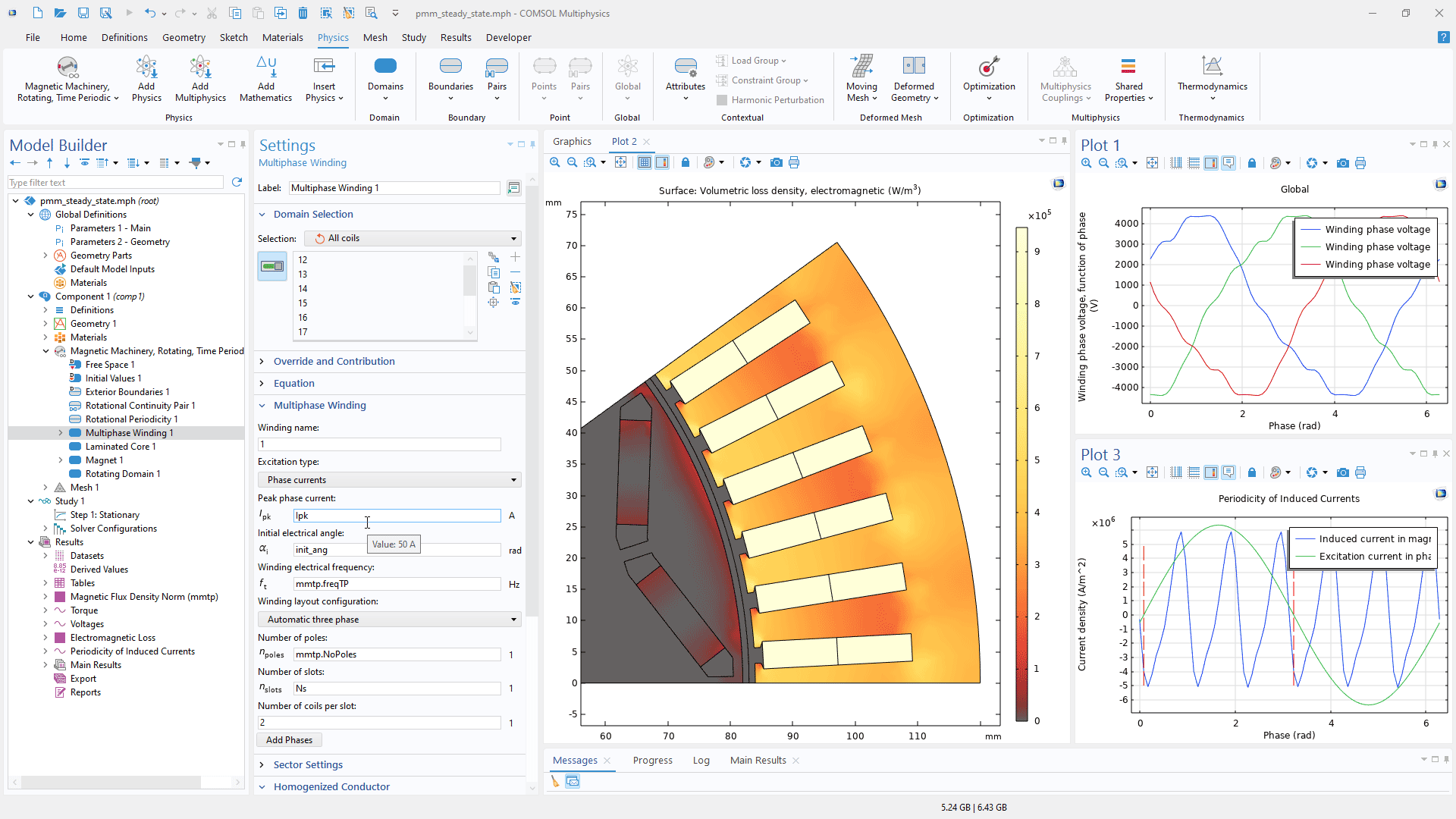
Piezomagnetic Cell Rover

B-H Curve Checker App
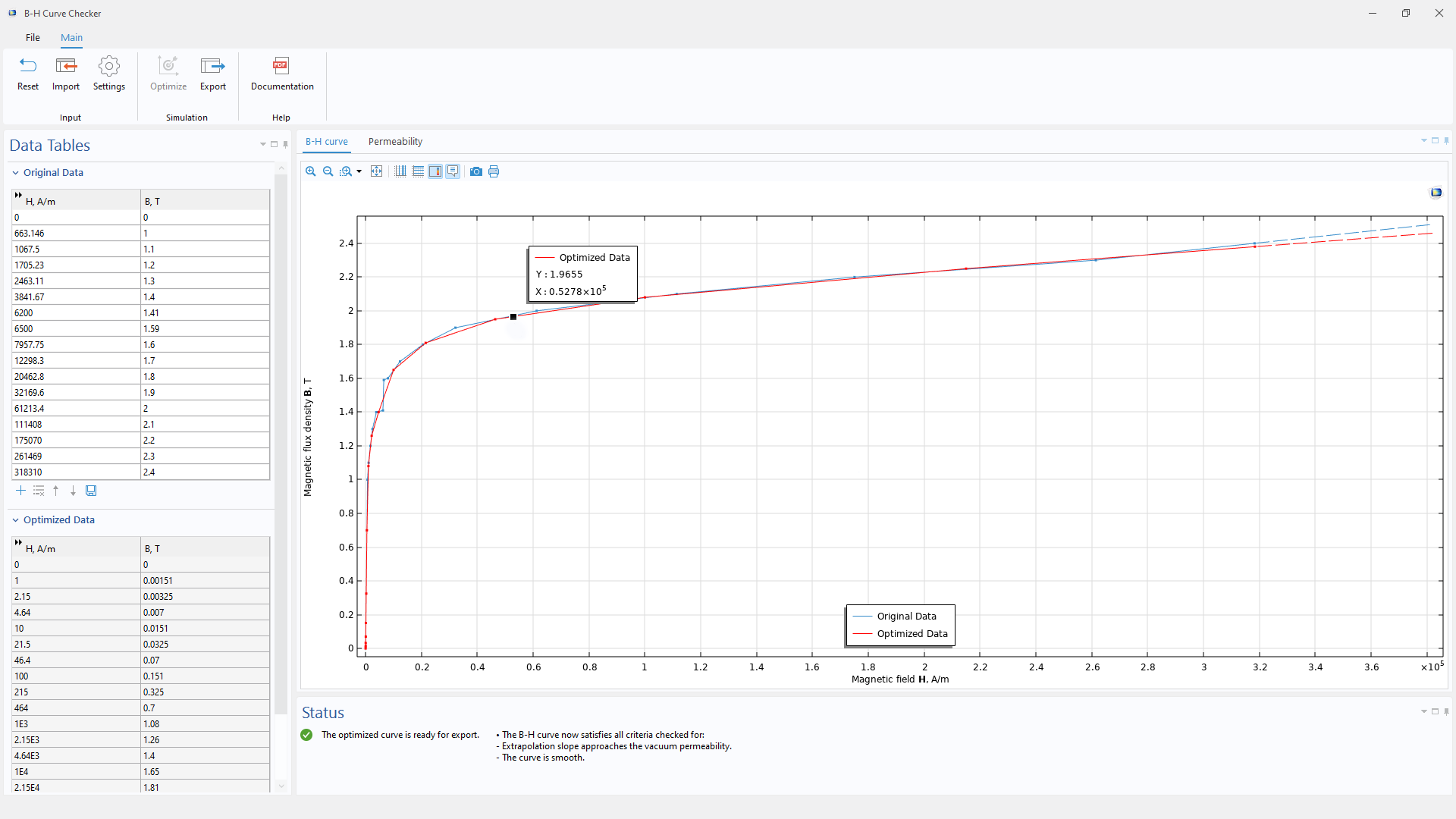
Circuit Extractor Add-In
